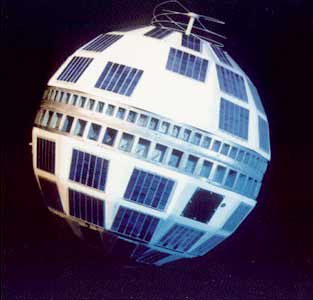by Walt Staples
Note from Karina: This one should have posted on the 30th. Hope you've been enjoying the walk down Memory Lane with Walt. We'll resume the normal schedule of "Watching the Space Race" next week, with Walt's posts resuming Jan 7 and going on Saturdays until he runs out of events. (He'll never run out of interesting things to say.)
There are few things as exasperating as receiving orders to break off an operation just as you're ready to take the other guy in the flank. Unfortunately, when Aunt Geneva called your name from the backdoor, an immediate truce ensued. This July afternoon in 1962 was no different. I dropped the muzzle of my weapon of choice, a .45 Thompson submachine gun—one of the finest examples of Mattel's firearms production—and told Tommy Huddleston I'd see him later.
I wasn't sure why my Aunt wanted me. We'd had dinner; it was sometime after two and supper was usually at six. I'd learned during the summer that I stayed with them, that she and my Uncle Jack were very punctual folks.
She was drying her hands on her apron as I stepped up on the porch. “Come on in; there's going to be something on television we need to see.” This was a bit out of the ordinary. Usually, in the afternoon we might watch the “Channel 10 Matinee for an Afternoon” together, but that came on at two and the cat clock on the kitchen wall showed a few minutes until three.
“What's on?”
Her answer nonplussed me. “Pictures from Europe.” I raised an eyebrow (a bad habit for an eleven-year-old when dealing with adults). Reading my mind, she continued, “No, I don't mean pictures like we usually see. I mean live pictures, not on film. They're going to be showing pictures of what's going on right now, this minute. They're sending them through that satellite, Telstar.”
The two of us settled on the couch. At three sharp, we entered the world of real-time international TV. An American TV news anchorman (at this point, I frankly can't remember whether it was NBC's Chet Huntley or CBS's Walter Cronkite—or both) welcomed the viewers. I remember seeing an American Flag, the Statue of Liberty, and—I think—Mount Rushmore. This was replaced by a tweedy gentleman who said in a plummy BBC accent that he was speaking from Brussels. The picture switched to Paris and the Eiffel Tower. The broadcast closed, as I remember, with a shot of the huge white bubble that enclosed the antenna in Andover, Maine. Interestingly, the pictures from the American side were crystal-clear (at least as judged for that time), but the pictures from Europe rippled as if seen through heat waves or water. The pictures we watched were in living black and white—whether they were broadcast in color or not, I don't know; my aunt and uncle, like most at that time, owned a black and white set (it wasn't until 1964 that my father bought a RCA color console model—the local TV repairman had to study a week and a half before he could adjust the colors that had been scrambled on the trip from the store in Roanoke over the mountains into the wilds of West Virginia—he didn't charge us because of the learning opportunity). [If anyone reading this knows whether or not the broadcast was in color, I'd appreciate them leaving the answer in the “Comments.”]
*
Telstar 1 was owned by AT&T and developed by Bell Labs (part of the Bell Telephone System--”Ma Bell”). It was lofted by a NASA Delta rocket which limited its size to a 34.5 inch (87.6 cm) sphere. The satellite turned the scales at around 170 pounds (77kg). It was powered by solar cells producing a staggering 14 watts and was spin-stabilized.
Telstar first broadcast a picture on 11 July 1962, a nonpublic “Is this thing working?” broadcast. The first public broadcast, the one my aunt and I marveled over, was on 23 July 1962 at 15:00 EDT. As it was in a non-geostationary orbit, unlike the norm for communications satellites these days, Telstar 1 was only above the horizon for 20 minutes during each 150 minute orbit.
Telstar 1 established several firsts besides being the first rebroadcasting telecommunications satellite. It was also the first privately owned payload launched by NASA . It was the first satellite, to my knowledge, to have a song named for it (Joe Meek's instrumental which is on the first record I bought with my own money, “The Ventures Play Telstar and the Lonely Bull”--which I'm listening to as I write this). It's also the first satellite to have a soccer ball named for it, Adidas's design for the FIFA World Cups competitions—the black and white one that most of us in the U.S. think of when the word, “soccer ball,” is mentioned.
Telsar 1 continued in service routing TV, telephone, and fax and data traffic until a number of its transistors were fried by Van Allen Belt radiation excited by high-attitude detonations during both American and Soviet nuclear testing. It first went off the air in early December of 1962, was resuscitated a month later, and finally died on 21 February 1963. At last word, Telstar 1 is still orbiting the Earth, a victim of the Cold War.








0 comments:
Post a Comment